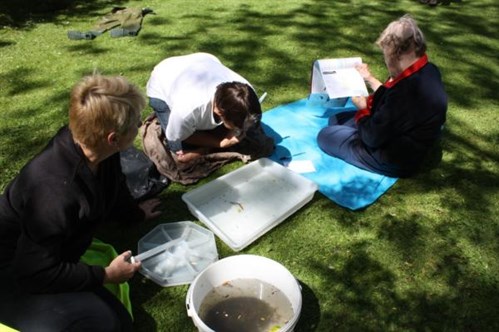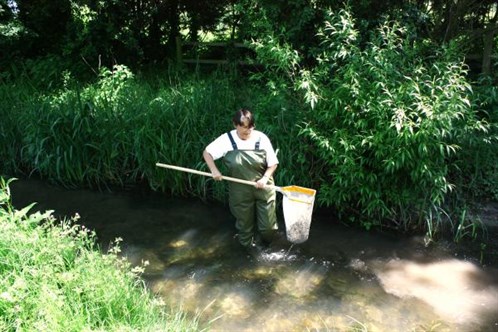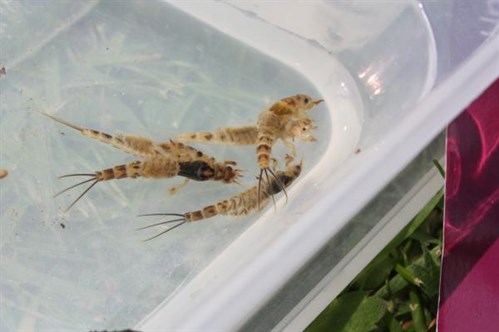Riverfly Monitoring
Riverflies monitoring in Chalgrove Brook – keeping an eye on the health of our brooks

CWaCS have been keeping a keen eye on the wildlife in our brook, through monthly monitoring of the invertebrate life found there.
Along with a group from Cuxham and Ewelme, we received training last year from the Riverfly Partnership, an organisation started by anglers who together with the environment agency set up the ‘Anglers Monitoring Initiative’, a simple method of monitoring the health of a stream or river by looking for 8 key invertebrate groups.
These invertebrate species are sensitive to changes in the water quality, therefore as the same survey is carried out each month any drop in numbers can indicate a pollution incident upstream. This information is then passed onto the Environment Agency to take action.

To catch the sample we use a method called ‘kicksampling’, stirring up the bed of the stream to dislodge any invertebrates living there, a pond net is held downstream for 3 minutes and there is also a 1 minute hand search to turn over larger rocks. The sample is then carefully examined and the number of each species counted up.
So far in Chalgrove Brook we have had consistent results; May’s sample was very good with a number of different species. Some of the things we’ve found in Chalgrove brook include Mayfly larvae, which spend a year living in the water to emerge on the wing for 1 day in which they mate, lay eggs and die! Also Caddis fly larvae, who build delicate cases around themselves from small stones, sand grains or shells, plenty of Freshwater Shrimp and we’ve even found a few Bullhead fish and small crayfish, though these are, sadly, mostly the American Signal Crayfish invaders.
